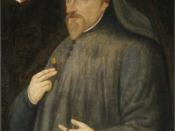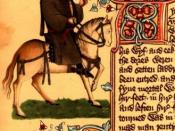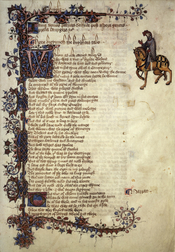Chaucer begins the Prologue with a beautiful announcement of spring. This introduction is the voice of the Poet, polished, elegant, and finished. He tells us that just as Nature has a predictable course through the seasons, so does human nature follow a seasonal pattern, which causes people to want to break out of winter's confinement and go traveling in the spring.
Thus the stage is set for Chaucer, who is the Narrator of this poem. Twenty-nine travelers meet at the Tabard Inn in London before undertaking a journey to the Shrine of St. Thomas Becket in Canterbury. The group is assembling as Chaucer arrives and, as he observes the group and interacts with some of them, he decides that he will join their party. From his vantage point as anonymous Narrator, Chaucer describes the scene and the pilgrims as they arrive.
In the prologue, The Canterbury Tales by Geoffrey Chaucer is about the pilgrimage of many different characters to Canterbury.
Chaucer writes about the characters' personalities and their place on the social ladder.
In discussing Chaucer's collection of stories called The Canterbury Tales, an interesting picture or illustration of the Medieval Christian Church is presented. However, while people demanded more voice in the affairs of government, the church became corrupt -- this corruption also led to a more crooked society. Nevertheless, there is no such thing as just church history; this is because the church can never be studied in isolation, simply because it has always related to the social, economic and political context of the day. In history then, there is a two way process where the church has an influence on the rest of society and of course, society influences the church. This is naturally because it is the people from a society who make up the church....


